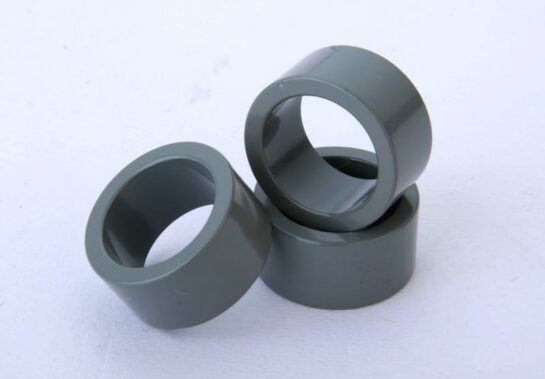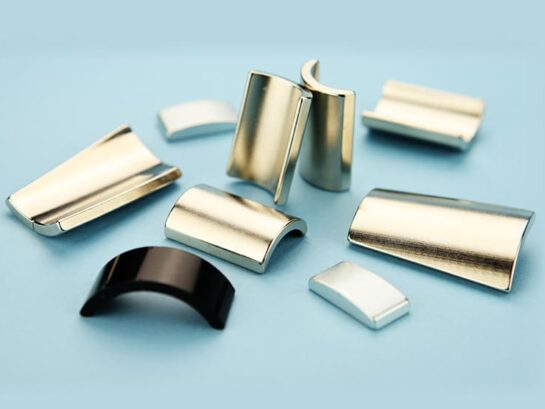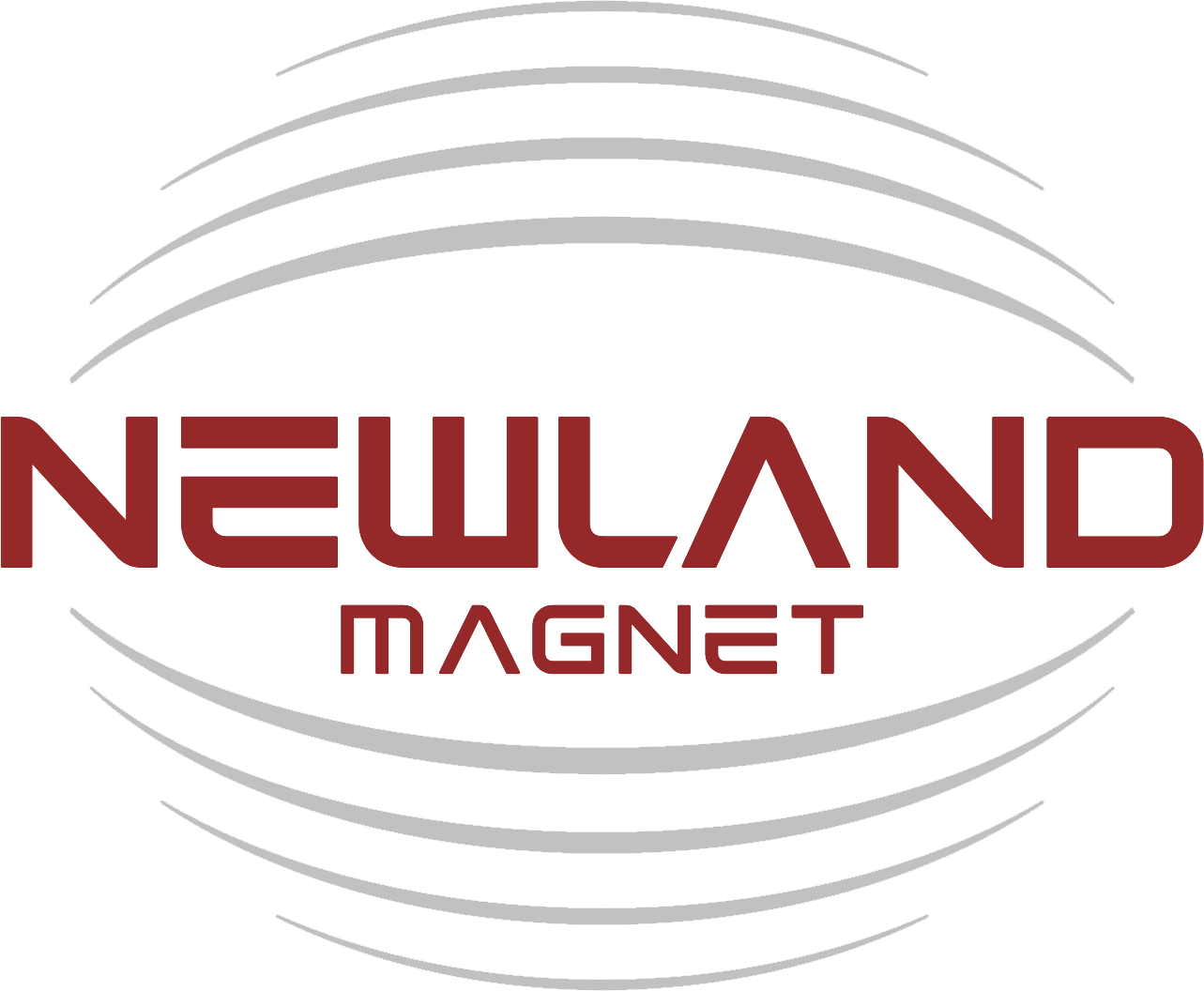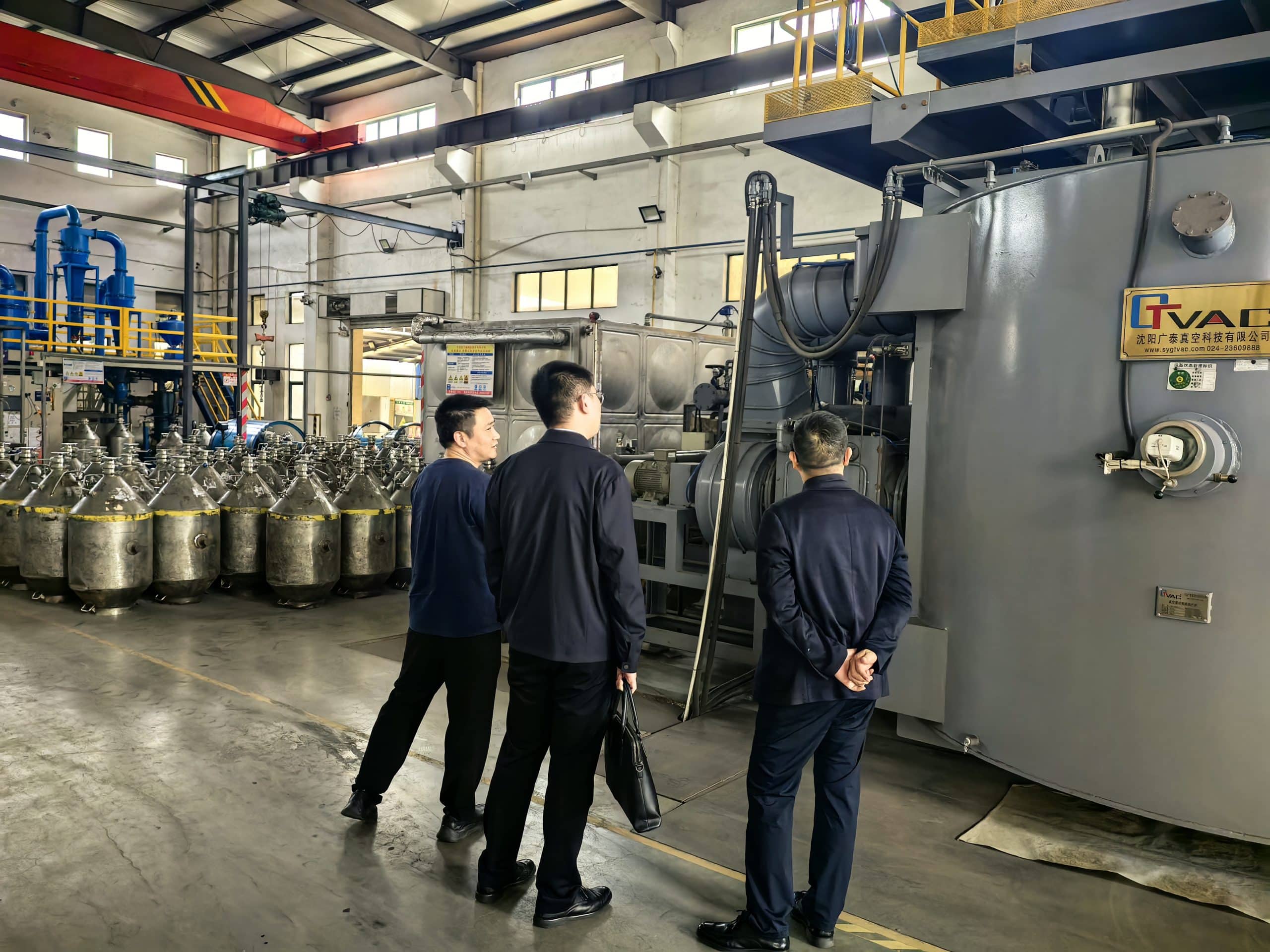The NdFeB magnet, also known as the neodymium magnet, is one of the strongest permanent magnets available. One of the valuable properties of an neodymium magnet is the fact it can attract ferrous objects over 600 times heavier than its weight. Neodymium magnets can be shaped into a wide range of shapes for different applications, including into disc, rectangular, rod and sphere shapes, to name but a few. Neodymium magnets can also be split into two types, those being bonded NdFeB magnets and sintered NdFeB magnets.

Bonded NdFeB Magnets
Bonded NdFeB magnets offer an inexpensive option that can be shaped into a suitable form for its given application. Constructed from Nd2Fe14B, bonded NdFeB magnets are synthetic magnets that are made from taking magnetic powder and bonding it together using either an injection or compression moulding.
The use of bonded neodymium magnets allows for incredible dimensional accuracy while also offering multi-polar orientation. Bonded neodymium magnets also offer a fantastic mechanical strength making them ideal in a range of situations including audio visual products, motors, disc drive motors, mobile phones, office equipment and far more.
The use of bonded NdFeB magnets allows for the production of motors while minimising on both weight and size. When comparing bonded to sintered it is worth noting that with bonded the magnets can be creating at one time without the need for secondary processing while also being shapable into a wide range of complex magnet forms.

Sintered NdFeB Magnets
Sintered NdFeB magnets are formed by taking the necessary raw materials and smelting them into ingots. The cooled ingots are then pulverised into a powder then sintered into blocks that are magnetised. Once sintered the magnet can be shaped into the necessary shapes for application.
The use of sintered NdFeB magnets can be found in a range of different industries with the magnets being found in a whole host of electronics, machinery, packaging, aircraft, medical equipment, motors, speakers and more.
The maximum energy product of a sintered magnet can exceed 50M, whereas a bonded magnet generally doesn’t even exceed 10M, meaning the strength of sintered is far higher. The magnet strength does come at a cost, with not only sintered having higher processing costs than bonded but also coming with poorer dimensional accuracy as well as larger loss during processing.

